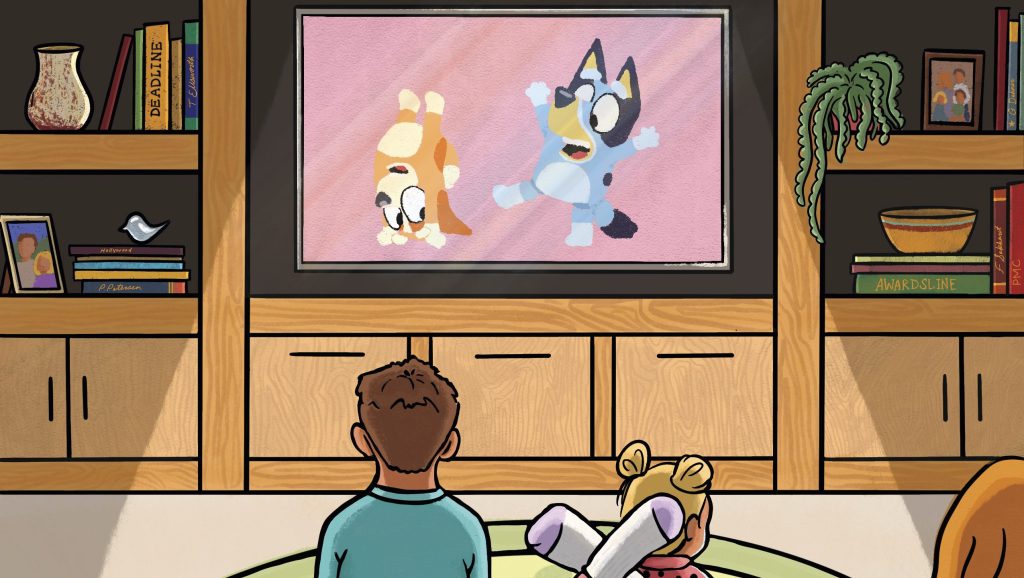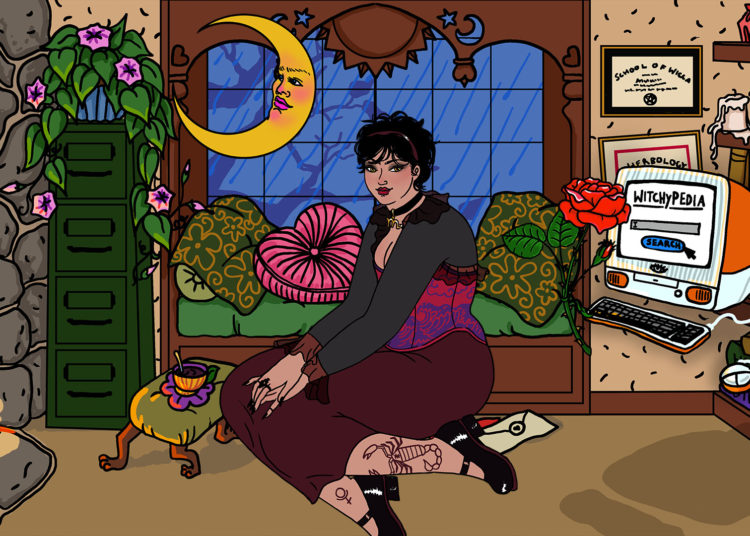It’s been nearly a decade since Joe Brumm’s little-known Australian children’s series Bluey took the Asian Animation Summit by storm in Brisbane, Australia, and BBC Studios Kids & Family Managing Director Cecilia Persson remembers the moment fondly.
“We all congregated around it,” says the exec, who was an working at WarnerMedia’s children’s division at the time. “Straight out of the gate there was this incredible, emotional storytelling and at the same time you could see that Bluey was speaking to both kids and parents on their level.”
The show follows Bluey, a loveable and inexhaustible blue heeler (aka Australian Cattle Dog) puppy, and her life with her dad, mom and little sister Bingo. In each episode, Bluey uses her limitless energy to play elaborate games that unfold in ways that bring her family and neighborhood together. When Bluey debuted at the Summit in 2016, buyers quickly saw the show’s potential to become a global kids brand and were eager for a piece of the action.
The Australian Broadcasting Corporation (ABC) and BBC ultimately co-commissioned Bluey in 2017 and, a few years later, BBC Studios’ inked a landmark deal licensing the show to Disney globally, while retaing distribution and merchandising rights. That deal is viewed as a stroke of commercial genius in the sector and was a key driver in helping BBC Studios achieve record revenues last year. Rumors persist Disney will attempt a megabucks buyout at some point. It turns out that loveable pups really do pay.
Nowadays, Bluey is recognizedas a juggernaut brand for both kids and adults and its status as the most-streamed show in the U.S. is touted regularly.
While children’s entertainment brands always have potential to grow big, shows like Bluey, Peppa Pig, CoComelon and, more recently, Netflix feature film KPop Demon Hunters, appear to have reached even starrier heights in the post-pandemic era. Netflix’s bi-annual ‘data dumps’ are now bedecked with children’s TV shows, merchandising opportunities are greater than ever thanks to streaming and platforms like YouTube can create global behemoths at an astonishing rate. But with budgets in the kids’ content space more challenged than ever, will the rising tide continue or is some content being left behind?
Emily Horgan, a former Disney executive and current kids media consultant, cannot discuss the genre without swiftly citing the impact of streaming and YouTube.
“The streaming wars are five years old now and they are entering their ‘childhood era’,” says Horgan. “Up until now it was about finding marquee entertainment shows like House of Cards or The Mandalorian,but that overfocus was unhelpful for kids’ content. These shows don’t pop straight away–Bluey took ages to build–so now is a big moment for kids brands.”
As they now look to prioritize subscriber retention, streamers are better realizing that family viewing is crucial to keeping the lights on, Horgan explains. These shows are often watched repeatedly, so placing the most popular kids’ shows front and center of a streaming platform is critical.
Refresh and reinvent
A key ingredient for success in this space is, say most execs, the ability to become part of a child’s everyday routine.
“Little kids have Peppa Pig in their life from mealtimes to playtime to bedtime,” says Esra Cafer, senior vice president, global brand strategy & management at the brand’s owner, Hasbro. “She’s a part of the family. This level of resonance and trust is something that takes a very long time to build.”
Another key ingredient, according to Hasbro, is to reinvent when the time is right. The company recently embarked on what Cafer describes as “the biggest thing we’ve done in storytelling for 20 years” by introducing Evie Pig, Peppa’s younger sister, to audiences. In a world of gloomy news headlines, Hasbro felt a cute cartoon piglet was just what the world needed.
Evie’s introduction to the world was a result of 18 months of top-secret planning: The newest Peppa addition was given a gender reveal, appeared on the cover of U.K. magazine Grazia and was discussed on national breakfast television. Evie was also ‘born’ in the Lindo Wing at St Mary’s Hospital — the same place where Kate Middleton gave birth to her children — after which a town crier announced Evie’s arrival into the world.
According to Cafer, Evie content has so far created more than 30 billion impressions across social platforms, and there is plenty more rollout to come in 2026.
“I suspected this would be news as these characters are famous, but the press reaction is something we would never have anticipated,” says Cafer. “This was both a beautiful thing and also something that we worked really hard on.”
Horgan praises Hasbro for making a “fundamental change to a brand’s DNA, which I respect a lot because if you don’t get it right you screw it up.”
Evie Pig’s birth story showed how much can be achieved when one throws some reinvention into the brand recipe and it’s perhaps no wonder that Hasbro held on tightly to kids brands such as Peppa Pig and My Little Pony, when it sold film and TV studio eOne to Lionsgate in 2023. Merchandising potential can be staggering when you introduce a new character or shake up a brand.
Peppa Pig currently has deals in place with the likes of Walmart and Toys “R” Us, and the latter is now closely eying the content space. Four-time Emmy winner Kim Miller Olko, the president of Toys “R” Us Studios, is set to deliver the opening keynote at this year’s MIP Junior, where she will discuss “brand and content strategy — from embracing AI, early testing on YouTube and TikTok, to initiatives that explore the intersection of mental health and play.”
Brands are also constantly looking to attract fans in new territories. Bluey was recently dubbed into Zulu, Afrikaans, Swahili and Nigerian Pidgin, marking what BBC Studios described as a “significant step in making quality children’s programming reflect African voices.”
Yet no territory feels more crucial right now than Korea. Industry vet Norman Grossfeld is the creator of the iconic Pokémon “Gotta catch ’em all” tagline and has nurtured some of the biggest brands in the last three decades. In a bid to tap into young people’s love for Korean content, Grossfeld joined Seoul and LA-based studio Aanaxion to run its K-content label, Konfetti Studios. The company will kick off its slate a slate that includes preschool series Hugglebops.
“I’m bullish on Konfetti’s chances exactly because of the success of Bluey, CoComelon and Peppa Pig,” he tells us just a few weeks into the job. “They were all started up by indies and creatives outside of the studio system, which gives them that magical spark.”
Grossfeld’s timing couldn’t be better. At the time of press, KPop Demon Hunters has become Netflix’s most viewed film ever with more than 236 million views — a record-breaking feat. “K-content is driven by a creative vision for what the target audience is,” says Grossfeld. “It’s not been watered down by studio notes to try and make it ‘something for everybody.’”
Netflix’s decision to launch KPop Demon Hunters straight to streaming did raise question marks around a potential missed opportunity in the cinema space, but Sony Pictures Animation managed to secure a short theatrical run for its singalong version, which had an estimated $19.2M opening weekend (although Netflix didn’t want to officially report numbers). It delivered Netflix’s first No. 1 box office win, and knocked Zach Cregger’s Weapons off of its box office perch.
Bluey and CoComelon are both gearing up to launch movies in 2027 and will be hoping a theatrical release will add another layer of success. In the same year, Moonbug’s CoComelon will join Bluey on Disney+, moving from Netflix after the high-profile deal was announced earlier this year.
“The front page of the kids’ internet”
Horgan believes that a lesser-discussed element of the runaway success of KPop Demon Hunters has been the sharp rise in the number of people watching the YouTube channels that promote Netflix and Sony Pictures Animation’s K-content. Indeed, anyone determined to make their brand a success in the kids’ space knows they have to take YouTube seriously thanks to the platform’s huge reach with younger audiences.
Nicolas Eglau, Moonbug’s EMEA and APAC chief, knows all too well the power of YouTube. CoComelon, he says,eschewed the traditional kids brand path by starting life on the Google-owned platform and building from there.
“The traditional model was big brands starting out as feature films and then going pay-TV or free-to-air or streaming, but we reversed that, starting with YouTube then Netflix, and then linear broadcasters,” says Eglau. “I still believe that CoComelon revolutionized the industry. The future is these blockbuster brands.”
Hasbro’s Cafer says there is “no cannibalization” of Peppa Pig’s linear audience even though YouTube is a cornerstone of its strategy, but the social video platform has certainly created huge ructions in the traditional children’s entertainment sector. “Kids are in charge of their schedule now, and we have the opportunity to program to them around the clock with no barrier to entry and no fee,” says Grossfeld of YouTube.
At the recent Annecy International Animation Film Festival, producers lamented the difficulty in nurturing shows in a traditional way thanks to children’s predilection for YouTube coupled with increasingly financially strapped broadcasters. Monetizing content on YouTube is also tricky, made even harder by the 2020 Children’s Online Privacy Protection Act, which disabled personalized ads for kids’ content and forced all creators to designate their videos as “Made For Kids.” Horgan says the “Made For Kids” label sees any revenue gained from a piece of YouTube content to fall by up to 70%.
“The irony is that the biggest brands of original IP are coinciding with a time when funding has never felt more challenged,” says Horgan. This is, she adds, a stark contrast to the “golden age of kids linear TV” around 15 years ago when shows like Paw Patrol, Hey Duggee and PJ Masks were huge hits, making funding for kids content easier to source.
“There is also a problem in that if you want to be big on YouTube you need to be able to make a global play, but when public broadcasters commission, they want to lock in rights at a local level and that makes it much harder to build franchises. YouTube is now the front page of the kids’ internet, so this creates a catch-22.”
BBC Children’s Director Patricia Hidalgo says she is “horrified” by the vast decrease in animation commissioning over the past few years in the U.S. “We are a global industry and if Disney, Amazon and Netflix are pulling out then that is one less [type of] co-producer for all of us,” she says, as a U.K. parliamentary inquiry into the ailing children’s TV sector gets underway.
But looking ahead, Hidalgo strikes an optimistic note, and also notes how important these megabrands are to the survival of traditional kids TV commissioners such as the BBC.
“They are unicorns,” she says. “They come along every 10, 15 or 20 years and just blow up. It’s a blessing that we still have them. If we didn’t, the industry would have dwindled much faster.”
The post Child’s Play: Kids TV Mega-Brands Are Booming But Can Any Others Compete? appeared first on Deadline.




